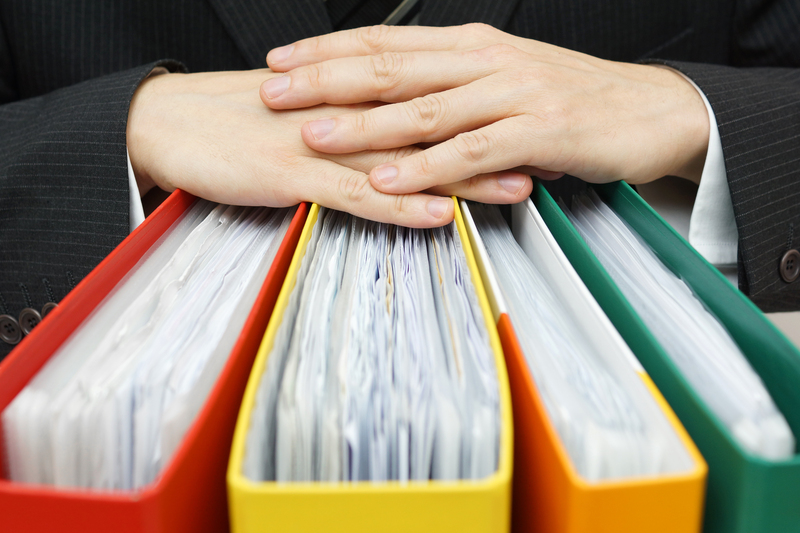Master the Art of Moving Your Bed and Mattress
Posted on 13/06/2025
Master the Art of Moving Your Bed and Mattress: Complete Guide
Whether you are relocating to a new home, refreshing your bedroom layout, or simply decluttering, moving your bed and mattress is an essential task that requires care, planning, and the right techniques. Beds and mattresses are often the largest and most cumbersome items in the household. Handling them incorrectly can lead to injuries, damaged furniture, and an overall stressful experience. With this comprehensive, SEO-optimized guide, we will teach you how to master the art of moving your bed and mattress safely and efficiently. From preparation to transportation and reassembly, you'll discover everything you need to know to ensure a smooth move.
Why Properly Moving Your Bed and Mattress Matters
Most people underestimate the significance of properly moving beds and mattresses. These items are not only bulky and heavy, but they also require precise handling to avoid potential damages and health risks. Mishandling can cause:
- Bodily injuries, such as strained backs or pinched fingers.
- Damage to the bed frame, slats, or box spring.
- Tears, stains, or bending of the mattress.
- Scratches and dents in doorways, walls, and floors.
Investing time in proper preparation and technique is crucial for a successful bed and mattress moving experience.

Pre-Move Preparation: What to Do Before You Start
1. Gather the Necessary Tools and Supplies
To move a bed and mattress like a pro, having the right equipment will make a world of difference:
- Moving blankets and plastic mattress bags for protection
- Furniture sliders or felt pads
- Ratchet straps or bungee cords
- Hand trucks or dollies
- Power drill or screwdriver
- Allen wrenches for disassembling bed frames
- Tape and zip ties for organizing loose parts
- Labels or masking tape to keep hardware secure and organized
Tip: Investing in sturdy mattress bags is worth every penny, protecting against dirt, moisture, and tears during transport.
2. Measure Doorways, Hallways, and the New Space
Not all bed frames or mattresses fit through tight spaces. Before you attempt to move them, measure all pathways--including stairs, elevators, and door frames. Compare these measurements to your furniture to ensure an easy pass-through without damage or getting stuck.
3. Clear and Prepare the Pathway
Moving large items is challenging enough. Clear the entire pathway you'll use. Remove rugs, shoes, furniture, and other obstacles to avoid trips or falls. If possible, prop open doors in advance using wedges or stops for a seamless process.
How to Disassemble and Pack Your Bed Frame
1. Remove Bedding and Accessories
Start by stripping the bed completely. Remove sheets, blankets, pillows, comforters, and mattress protectors. Wash and box these separately to keep them clean and organized for reassembly.
2. Disassemble the Bed Frame
Most beds are easier to move when taken apart. Here's how to handle different types of frames:
- Metal Bed Frames: Use the appropriate tools (such as Allen wrenches or screwdrivers) to gently loosen nuts/bolts. Keep all hardware in labeled bags.
- Wooden Bed Frames: Carefully dismantle slats, headboard, and footboard. Take pictures as you go to simplify reassembly later.
- Platform Beds: Remove drawers or storage components before detaching the frame.
3. Protect and Pack All Bed Components
- Wrap headboards, footboards, and side rails with moving blankets or bubble wrap.
- Secure hardware in labeled plastic bags and tape them to larger frame components.
- Bundle the slats together and wrap securely.
- If the bed had any intricate finials or ornaments, wrap them separately in bubble wrap.
Tips for Moving Your Mattress Safely and Hygienically
Mattresses are awkward, floppy, and easily damaged. Follow these steps to keep your mattress in top shape:
1. Choose the Right Mattress Bag or Cover
Use a waterproof, tear-resistant mattress bag. Slide the bag over your mattress and seal it securely with packing tape. This will shield your bed from dust, dirt, moisture, and potential pests during the move.
2. Use Proper Lifting Techniques
- Never lift with your back; always bend at your knees and use your legs to push up.
- Enlist help--even small mattresses are easier moved with two or more people.
- If possible, use a mattress sling or carrier with handles for better maneuverability.
- Avoid dragging the mattress along the ground, as this can tear the fabric and compromise the inner material.
Remember, lifting improperly can cause long-term back injuries. Use teamwork!
3. Protect Your Mattress During Transportation
- Keep mattresses upright inside the moving truck whenever possible.
- Use straps or bungee cords to secure the mattress and prevent shifting during transit.
- Avoid stacking other heavy furniture or sharp objects on top of your mattress.
Smart Strategies for Moving Different Types of Beds
Moving Platform Beds
- Remove and individually wrap drawers or other storage elements.
- Disassemble the frame, keeping small sections bundled together for easier reassembly.
Moving Adjustable Beds
- Unplug and secure all electronic components and cords.
- Remove moveable bases from rails if possible, following the manufacturer's instructions.
- Label all parts, and keep small electronics in padded bags to prevent shock or damage.
Moving Bunk Beds
- Take apart the upper and lower bunks separately.
- Wrap rails and ladders for protection, and keep fasteners securely packed together.
Moving Heavy or Antique Beds
- Always recruit extra help to prevent breakage or injuries.
- Wrap each section generously in thick blankets or foam for added protection.
Navigating Stairs, Elevators, and Tight Spaces
Stairs and elevators add an extra layer of challenge. To move your bed and mattress safely through these:
- Measure the width of your stairwell and compare with dismantled frame/mattress size.
- Use lifting straps for better control and leverage on stairs.
- Plan elevator trips in advance, keeping doors held open and bed parts neatly stacked.
- Never force a mattress through a tight door--if it won't fit, reconsider disassembly or find alternate access routes.
In some cases, it may be wise to hire professional movers for difficult spaces.
Loading and Unloading Your Bed and Mattress for Transport
Loading Techniques
- Place the mattress upright against the wall of the truck and secure with straps.
- Stack headboard, footboard, and bed rails next, with padding between each piece.
- Keep all hardware, screws, and bolts in a labeled box within arm's reach for easy unloading.
Unloading and Reassembly
- Unload bedding, hardware, and smaller pieces first--this prevents loss and confusion.
- Assemble the bed frame in your new space before removing the mattress from its bag.
- Wait to make your bed and add sheets until both frame and mattress are fully in place.
Tip: Take your time and follow your pre-move photos or labels to speed up reassembly.
Common Mistakes to Avoid When Moving Beds and Mattresses
- Failing to properly disassemble the frame--leads to scratches, broken slats, or damaged doorways.
- Skipping protective coverings--causes soiling and fabric tears.
- Lifting mattresses alone--increases the risk of injury.
- Ignoring measurements--can result in getting stuck or damaging your property.
- Transporting a mattress flat on a car roof--can result in wind damage or loss.
Professional vs. DIY: Should You Hire Movers for Your Bed and Mattress?
Depending on your budget, timing, and the complexity of your move, you might consider hiring professional movers to handle your bed and mattress transportation. Consider the pros and cons:
- DIY: More affordable, allows for control, requires more physical effort and planning.
- Professional movers: Less effort, experienced handling, added protection, usually insured. Costlier than DIY.
For king-size beds, antique bedframes, or moves involving multiple flights of stairs, hiring professionals may be the safer choice.
After the Move: Caring for Your Bed and Mattress
- After unpacking, give your mattress a few hours to air out before dressing it. This releases any trapped odors or moisture.
- Tighten bolts and check connections on the bed frame to ensure stability.
- Check for any hidden damage sustained during the move, and address it promptly before regular use.
- Consider cleaning your mattress using a vacuum or steam cleaner for freshness.

Frequently Asked Questions on Moving Beds and Mattresses
Can you move a mattress without a moving truck?
Yes, but you'll need a large enough vehicle (like a van or pickup). Secure the mattress upright inside and avoid exposing it to wind or rain. Never place a mattress on top of a car--it's unsafe and can damage both the mattress and your vehicle.
How do you move a memory foam or hybrid mattress?
Memory foam and hybrids are heavier and more flexible than traditional innerspring mattresses. Use two or more people, and always support the full length of the mattress to avoid bending, folding, or cracking the foam layers. Never roll or fold these mattresses unless the manufacturer specifically says it's safe.
Do you need to clean mattresses before or after moving?
It's a good idea to vacuum or spot-clean your mattress before covering and after moving, especially if you're storing it temporarily. This helps prevent dust mites, mold, and bacteria build-up.
Conclusion: Move Your Bed and Mattress with Confidence
By mastering the art of moving your bed and mattress, you'll not only protect your investment but also streamline your moving process, minimize risk of injury, and arrive in your new space stress-free. Remember to:
- Plan ahead and gather all necessary equipment.
- Disassemble, wrap, and label every part.
- Use proper techniques--or hire professionals--for heavy or awkward furniture.
- Care for your mattress post-move for lasting comfort.
Ready to move your bed and mattress like a pro? Follow this guide and you'll enjoy a safe, efficient, and even enjoyable moving experience. For more moving tips, tricks, and in-depth guides, be sure to check our other resources!



 Guide price for the hire of a Transit Van /up to 300 cu ft/.
Guide price for the hire of a Transit Van /up to 300 cu ft/.